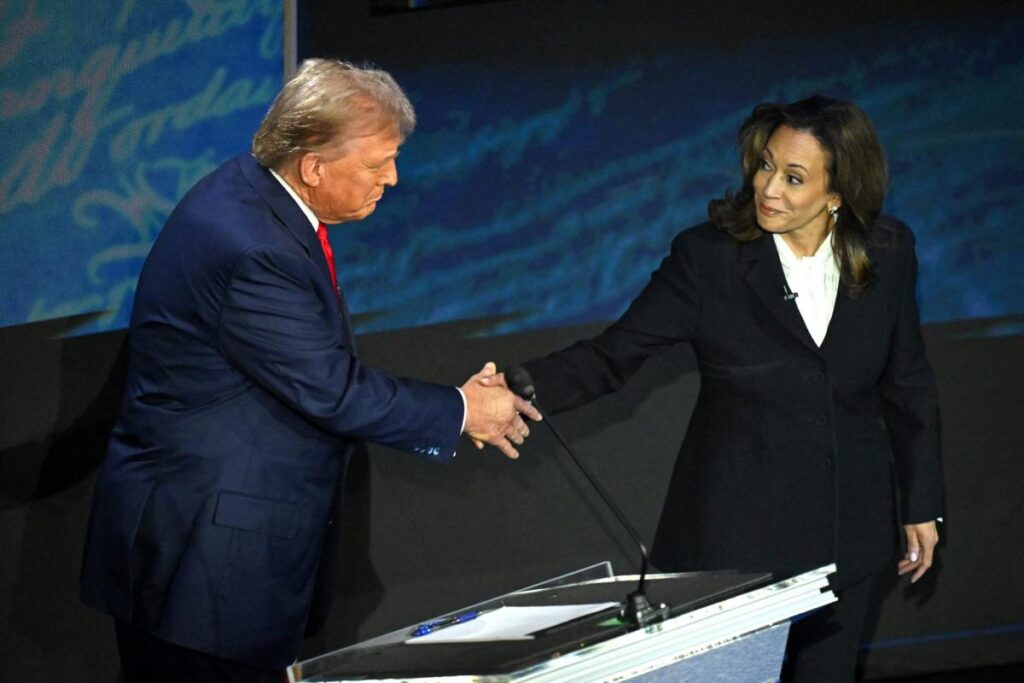In the wake of the COVID-19 pandemic, Donald Trump has directed considerable blame towards Vice President Kamala Harris and President Joe Biden for the surge in inflation that has troubled American voters. This criticism is strategic, as concerns over inflation and the economy have become dominant issues as voters prepare for the upcoming elections in November. However, a significant number of economists argue that a second Trump presidency could lead to even higher inflation rates. According to a quarterly survey conducted by the Wall Street Journal, 68% of economists anticipate that inflation would likely increase under Trump, which is a rise from previous assessments in July. Only 12% believe inflation would be higher under Harris, and 20% contend that the election outcomes would not significantly impact inflation.
Economists express concern primarily due to Trump’s proposed approach to trade and tariffs. Promising to intensify his protectionist policies, Trump has suggested implementing a worldwide tariff of 20% on imported goods and a steep 60% tariff on Chinese products. These measures are viewed skeptically by experts who note that tariffs ultimately burden American consumers. Dan Hamilton, the director of economic research at California Lutheran University, emphasizes that Trump’s new approach represents an even stronger anti-free-trade stance compared to Harris’s policies, raising fears over economic growth and price stability.
Both major political parties have leaned into populist rhetoric surrounding tariffs, appealing to sentiments of protecting American industries and jobs from foreign competition. However, this simplistic narrative neglects the complexities of how tariffs function economically. If importers do not absorb the costs of tariffs through reduced profits or layoffs, the financial burden inevitably falls on consumers, leading to higher prices and inflation. The trade war initiated by Trump in his earlier administration already imposed $80 billion in new taxes on Americans, with evidence from Federal Reserve studies indicating that these tariffs resulted in a net decrease in employment and output due to heightened input costs and counter tariffs enacted by other countries.
Interestingly, the Biden administration has maintained most of Trump’s tariffs, further complicating the economic landscape. In response to inflation and market dynamics, the current administration recently announced additional tariff increases on $18 billion worth of Chinese goods, targeting crucial sectors like semiconductors and electric vehicles. The Tax Foundation, a nonpartisan think tank, underscores the long-term economic damage caused by both the Trump and Biden tariffs, forecasting a reduction in GDP by 0.2% and the loss of approximately 142,000 full-time jobs. Trump’s proposed increases, on the other hand, could harm GDP significantly more, leading to an additional drop of at least 0.8% and cutting around 684,000 jobs.
Despite the ongoing inflation concerns and the turbulent economic atmosphere, there are signs of improvement. Inflation rates have retreated from their peaks, aligning more closely with the Federal Reserve’s target of 2%, a development that is being positively received in the market. In September, the Federal Reserve took an action that marked a significant shift by cutting interest rates for the first time since the pandemic began. This adjustment signals some confidence in the economic recovery process while also illustrating the Fed’s ongoing management of inflationary pressures.
As voters assess the economic circumstances leading up to the November elections, the dialogue around inflation, tariffs, and trade policies takes a central role. The contrast between Trump’s aggressive tariff proposals and Harris’s approaches will likely dominate the political landscape, influencing voter sentiment and decisions in the short term. With divergent opinions among economists regarding the implications of policies proposed by both candidates, American voters may find themselves weighing not just party loyalty but also the viability of contending approaches to a stable economy. This scenario underscores the complexity of national economic policy and the interconnectedness of global trade, domestic production, and consumer prices in shaping the discourse leading up to the elections.

